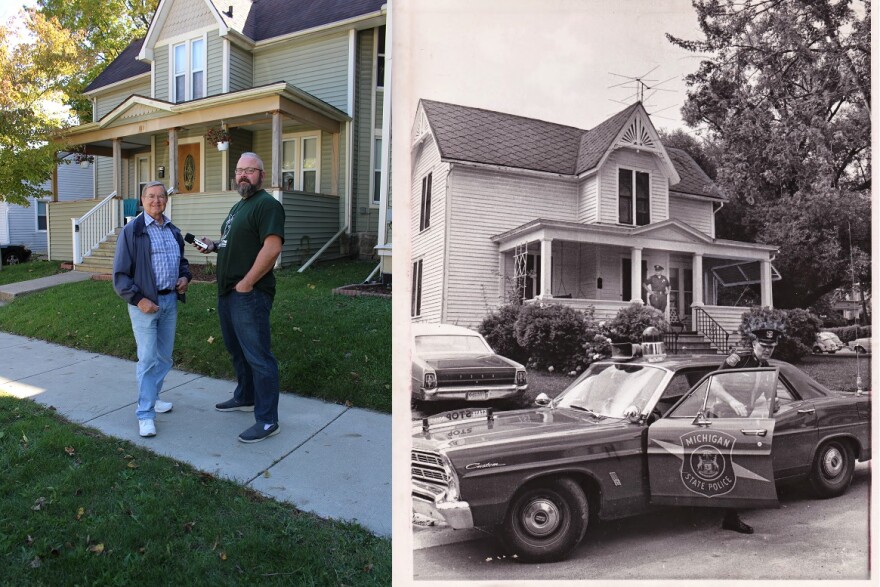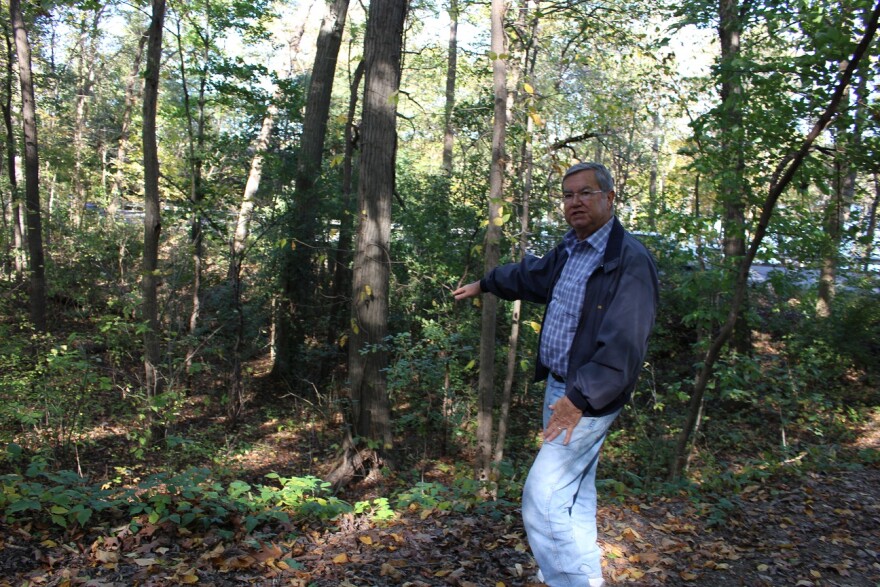Mary Terese Fleszar was last seen alive the evening of July 9, 1967. Her body was found on an abandoned farm in Superior Township just about one month later. Investigators didn’t know it then, but this was the beginning of a series of murders attributed to John Norman Collins. These horrific acts of violence held our community in terror until Collins’ arrest in July 1969. On this week’s "Hidden in Plain Sight," WEMU’s Patrick Campion meets up with “Terror in Ypsilanti” author Gregory Fournier to take us on a tour of some of the sites and sounds associated with the “Michigan Murderer” who preyed on Ann Arbor and Ypsilanti co-eds for two years.

In 1967, John Norman Collins lived in a rental about one block south of EMU’s campus. From his second floor window he would have been able to see the very women he chose as some of his victims. Victims like Mary Terese Fleszar, a 19-year-old EMU accounting major and Joan Elspetch Schell, a 20-year-old art student.
Collins was a student at EMU majoring in elementary education. He lured women into his clutches by exploiting a common practice at the time, women hitchhiking or arranging rides with strangers to get from Ypsilanti to Ann Arbor and beyond. In the spring of 1969, he is connected to two murders, a 23-year-old Michigan law student named Jane Louise Mixer, and a 16-year-old Romulus High School student named Maralynn Skelton who was last seen alive hitchhiking in Ann Arbor.
Greg takes us next to the last place 13-year-old Dawn Louise Basom from Ypsilanti was seen alive.

Less than two months later, 21-year old Michigan graduate student disappeared shortly after midnight walking home from a friend’s party on Thompson Street. Her body would be discovered two days later near an abandoned farmhouse on North Territorial Road
Collins’ last victim was 18-year-old Karen Sue Beineman, another EMU student. On July 23, 1969, she was last seen alive at a wig shop in downtown Ypsilanti.

Collins was arrested, tried, and convicted to a life sentence for Beineman’s murder. During the course of the investigation, police determined that she had been killed in the basement of Collins’ uncle’s family home in the College Height’s neighborhood. One neighbor, Dr. Marjorie Barnes, saw Collins leaving State Police Sergeant David Leik’s home.
Collins took Beineman’s lifeless body to a gully off Riverside near the Huron River in Ann Arbor. Three days later it was discovered, and this set a strange sequence of events into effect that would eventually lead to the capture of who many had dubbed the "Ypsilanti Ripper."

This is the only murder for which Collins would ever stand trial. He has been connected by physical and circumstantial evidence to other victims, including the June 1969 murder of Roxie Ann Phillips in Monterey, California, but those cases were never pursued after his initial conviction. Collins' grip of terror on our community ended officially on August 19, 1970, when he was found guilty of first-degree murder. Eight days later, he was sentenced to life imprisonment without the possibility of parole; he will live out the remainder of his days in the maximum security wing of Marquette Branch Prison. John Norman Collins, now known as John Norman Chapman, continues to maintain his innocence despite this evidence and having been convicted by a jury of his peers. A sorority house, quiet student rentals, family homes, downtown businesses, and isolated tracts of land still stand, hidden in plain sight, as a reminder of the lives cut short during a time of Terror in Ypsilanti. Thank you to Gregory A. Fournier, author of "Terror in Ypsilanti," for taking us on this tour, and photographer Lisa Powers for documenting our work.

Non-commercial, fact based reporting is made possible by your financial support. Make your donation to WEMU today to keep your community NPR station thriving.
Like 89.1 WEMU on Facebook and follow us on Twitter
— Patrick Campion is the WEMU Program Director. You can contact Patrick at 734.487.3363, on twitter @WEMUPC, or email him at pcampion@emich.edu





